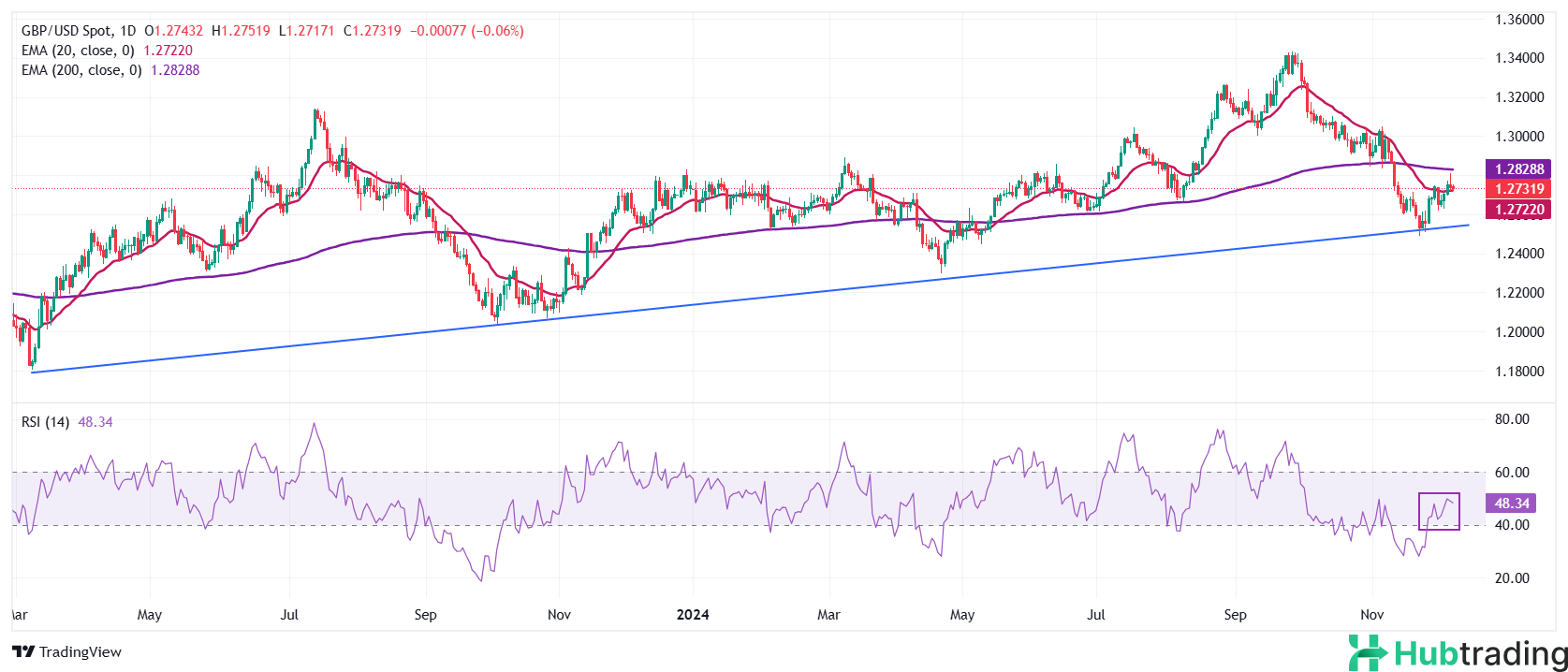- The Pound Sterling strengthens against the US Dollar as expectations grow for a 25 basis point rate cut by the Federal Reserve on December 18.
- Fed Governor Michelle Bowman emphasized a cautious approach to rate cuts, citing persistent inflationary pressures.
- Survey data indicates that increased employer contributions to National Insurance under Labour’s first budget have dampened labor demand in the UK.
The Pound Sterling (GBP) starts the week trading broadly firm against its major peers, except for Asia-Pacific currencies, as the Bank of England (BoE) is expected to adopt a gradual policy-easing approach amid concerns over persistent inflation.
On Thursday, BoE Monetary Policy Committee (MPC) external member Megan Greene stated, “I suspect we’ll hit our inflation target by the end of our forecast period, which is three years.” Similarly, BoE Governor Andrew Bailey affirmed on Wednesday that while the central bank still has work to do to reduce inflation below its 2% target, the disinflation process is firmly underway.
Monday’s session will see investor focus shift to BoE Deputy Governor Dave Ramsden’s speech at 13:00 GMT during an event hosted by the Official Monetary and Financial Institutions Forum. Ramsden has consistently signaled support for reducing interest rates.
On the economic front, a recent survey by the Recruitment and Employment Confederation (REC) and KPMG revealed a decline in labor demand following the UK Labour government’s first budget, which raised Employers’ National Insurance Contributions (NIC) to 15%. The REC reported its staff demand index fell to 43.9 in November, the lowest level since August 2020, down from 46.1 in October.
Pound Sterling Outperforms US Dollar on Dovish Fed Expectations
- The Pound Sterling (GBP) advanced to near 1.2770 against the US Dollar (USD) during Monday’s London session, as growing confidence in a Federal Reserve (Fed) rate cut on December 18 boosted the GBP/USD pair.
- According to the CME FedWatch tool, there is now an 83% probability that the Fed will lower its key interest rates by 25 basis points (bps) to 4.25%-4.50%, up from 62% a week ago. Despite increased bets on rate cuts, the US Dollar Index (DXY)—which measures the Greenback against six major currencies—rose slightly to around 106.20.
- Market speculation of a Fed rate cut intensified following Friday’s release of the US Nonfarm Payrolls (NFP) data for November. The report showed job gains of 227,000, exceeding expectations of 200,000, while the Unemployment Rate edged up to 4.2%, in line with forecasts, from 4.1%. Average Hourly Earnings increased by 0.4% month-over-month and 4.0% year-over-year, surpassing estimates.
- However, Federal Reserve Governor Michelle Bowman defied market expectations, stating on Friday that she prefers a “cautious and gradual” approach to lowering interest rates, citing persistently elevated inflation.
- Investors now look to the release of the US Consumer Price Index (CPI) data for November on Wednesday for further insight into inflation trends. Headline CPI inflation is expected to rise to 2.7% from 2.6% in the prior reading, while core CPI, excluding food and energy prices, is forecast to hold steady at 3.3
Technical Analysis: Pound Sterling Steadies Above 20-Day EMA

The Pound Sterling continues its effort to reclaim the critical resistance level of 1.2800 against the US Dollar, with the GBP/USD pair holding firm near the 20-day Exponential Moving Average (EMA) at 1.2720.
The 14-day Relative Strength Index (RSI) remains in a neutral range between 40.00 and 60.00, indicating a lack of clear directional momentum.
On the downside, the pair is likely to find support near the upward-sloping trendline around 1.2500, drawn from the March 2023 low of 1.1800. To the upside, the 200-day EMA presents a significant resistance level that could cap further gains.





